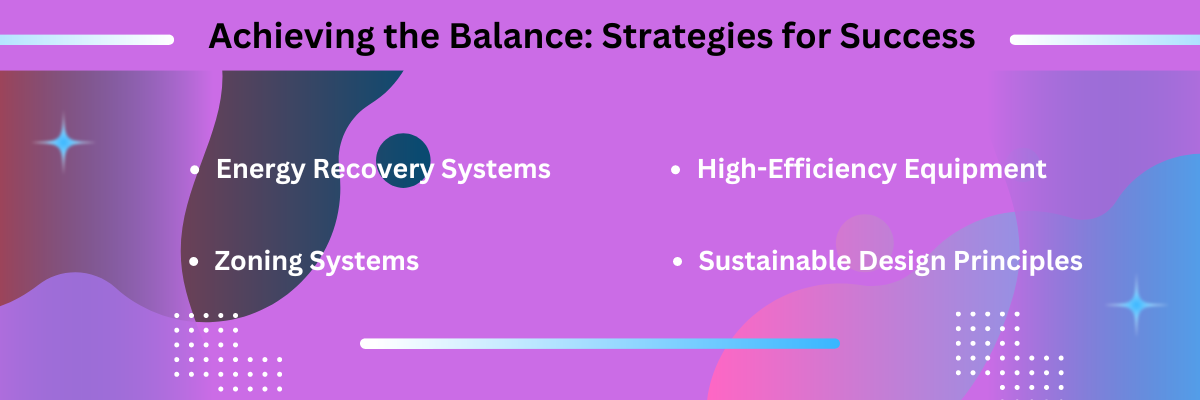In state-of-the-art international, in which the demand for each comfort and sustainability in homes is at an all-time high, HVAC (Heating, Ventilation, and Air Conditioning) design engineers play a important role. They are the professionals responsible for creating systems that maintain best indoor climates even as additionally making sure strength performance. This sensitive balancing act isn’t any small feat, and it highlights the essential work of HVAC design engineers in modern creation and upkeep tasks.
Table of Contents
ToggleThe Dual Mandate: Comfort and Efficiency
Comfort: At the maximum basic level, HVAC systems are designed to keep snug indoor temperatures and air quality. This includes heating within the wintry weather, cooling in the summer, and keeping adequate ventilation yr-round. The purpose is to create an environment where occupants can live and paintings simply.
Efficiency: In addition to providing consolation, HVAC systems ought to also be electricity-efficient. This approach the use of the least amount of energy feasible to attain the favored indoor weather conditions. Efficient HVAC structures lessen operational expenses and reduce the environmental effect of electricity intake, making them a essential component of sustainable building design.
The Role of HVAC Design Engineers

HVAC design engineers are tasked with designing structures that obtain this balance among comfort and performance. Their obligations encompass:
System Design: Developing the general format and specifications of HVAC systems to meet the particular desires of a building.
Energy Modeling: Using software gear to simulate the power intake of various HVAC device designs and selecting the most green alternative.
Load Calculations: Determining the heating and cooling hundreds required for a building primarily based on elements which includes climate, building orientation, insulation stages, and occupancy.
Equipment Selection: Choosing the perfect HVAC device, together with furnaces, air conditioners, heat pumps, and ventilation structures, that meet the design standards.
Integration: Ensuring that the HVAC machine works seamlessly with different building structures, consisting of electric, plumbing, and automation structures.
Regulatory Compliance: Ensuring that the layout meets all relevant codes and standards, which include electricity efficiency rules.
Achieving the Balance: Strategies for Success

Advanced Technology Integration: HVAC layout engineers leverage advanced technologies together with clever thermostats, variable refrigerant glide (VRF) systems, and constructing automation systems (BAS) to decorate each comfort and efficiency. These technologies allow for specific manipulate over indoor climates and might adapt to converting situations in real-time, optimizing energy use.
Energy Recovery Systems: Incorporating power recuperation structures, consisting of heat exchangers, into HVAC designs can substantially enhance efficiency. These systems seize waste heat from exhaust air and use it to preheat incoming sparkling air, reducing the amount of energy wished for heating.
Zoning Systems: Zoning allows one-of-a-kind areas of a constructing to be heated or cooled independently, based on their precise desires. This now not most effective complements comfort with the aid of taking into consideration custom designed weather manage however also improves efficiency by using keeping off the heating or cooling of unoccupied spaces.
High-Efficiency Equipment: Selecting high-performance HVAC device, including condensing boilers, high-SEER (Seasonal Energy Efficiency Ratio) air conditioners, and power-green lovers and cars, is vital. These additives use less strength to perform the equal duties, decreasing typical power intake.
Sustainable Design Principles: HVAC layout engineers comprise sustainable design ideas into their tasks, which includes passive solar heating, herbal ventilation, and the use of renewable strength assets. These techniques lessen reliance on mechanical HVAC structures and enhance ordinary power performance.
The Impact on Green Building Certifications
HVAC layout engineers are also critical for attaining inexperienced building certifications, including LEED (Leadership in Energy and Environmental Design) and BREEAM (Building Research Establishment Environmental Assessment Method). These certifications require buildings to satisfy stringent strength efficiency and environmental performance criteria. Effective HVAC design is a key component in earning those certifications, as it without delay influences a building’s energy use, indoor air fine, and universal sustainability.
The Future of HVAC Design Engineering
As technology advances and the rush for sustainability grows stronger, the role of HVAC design engineers will preserve to adapt. Emerging traits encompass the mixing of artificial intelligence (AI) and gadget studying into HVAC systems, for you to similarly beautify their potential to optimize overall performance and efficiency. Additionally, the growing use of renewable power sources, along with sun and geothermal, in HVAC designs will play a enormous function in decreasing the carbon footprint of buildings.
Conclusion
HVAC layout engineers are at the vanguard of making comfortable and power-green indoor environments. By skillfully balancing the dual mandates of comfort and efficiency, they bridge the gap between occupant wishes and sustainable constructing practices. As the demand for excessive-overall performance buildings keeps to rise, the information of HVAC design engineers can be more vital than ever in shaping the destiny of the built surroundings.






